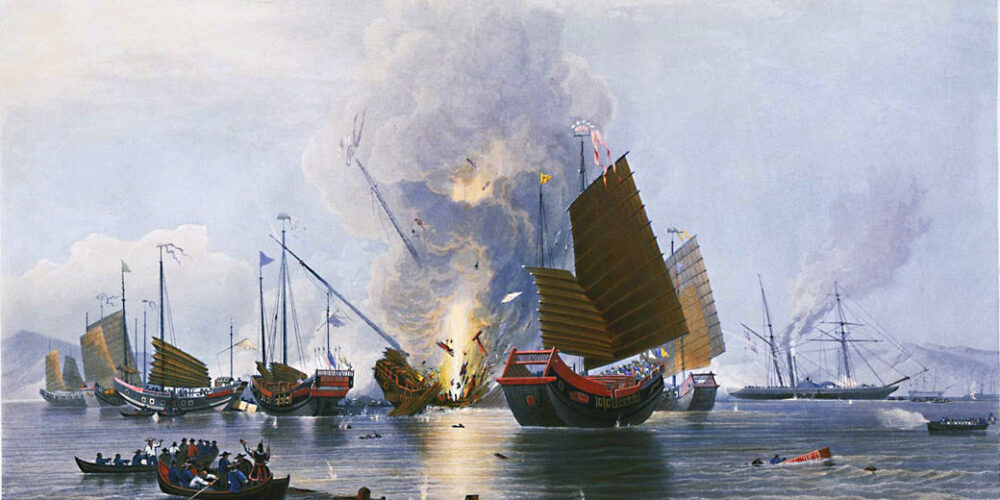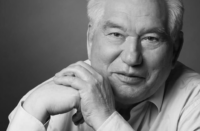Narcotics are, in some ways, just like any other commodity. Be it oil, natural gas, sugar, or coffee, under capitalism their purpose is to allow profits to be made.
Hyper-consumerism has led to unequal levels of development in the Global North and South, social alienation in domestic markets, and environmental damage. The production, sale and use of cocaine or heroin follow the same laws as any other commodity. What separates them is their social effects.
The British East India Company was one of the most important and also one of the vilest institutions in history. It had its own army, diplomatic corps, and education system and was a crucial part of the British Empire.
In the eighteenth century Britain had an insatiable demand for tea from China, so much so that it developed a trade deficit with Qing dynasty China. The East India Company had the idea of smuggling opium from Bengal into China and so making the Chinese population dependent; this would be a way for Britain to gain access to the resources it needed in China. It worked, and the result was the Opium Wars, in which Britain and others annexed parts of China—most importantly Hong Kong—and managed to control three-quarters of China’s imports. China’s population of addicts would skyrocket until the revolution in 1949.
The Treaty of Tianjin brought the Opium Wars to an end. Britain was allowed a presence in China, and it managed to get the Qing to legalise the opium trade. This was a clear case of drugs, and their unique properties, being used to further imperialist objectives. But it was far from the last.
Contrary to the understanding of US imperialism’s “War on Drugs,” the reality is that what has existed is a war of drugs. After the defeat of Nazism in 1945 the Communist Parties of France and Italy enjoyed massive growth, thanks to their wartime role. As the Cold War began, the United States was not very happy about communists in the French and Italian governments. In Marseille a wave of strikes in 1947 led to the United States and its allies allowing Corsican gangsters to bring heroin into Europe, as long as they carried out attacks on communists. This was known as the French Connection.
In Burma the CIA backed anti-communists who smuggled drugs across Laos, Burma, and Thailand. This was largely controlled by the Kuomintang (National Party), the Chinese nationalists who lost the war to the communists. By 1973 these forces controlled a third of the world’s opium supply.
During the military government’s war against the Communist Party of Burma these forces would be important allies. Even some revolutionary groups in Burma fell into the trap of trafficking, and splintered over drug disputes.
Burma was not the only example of the CIA supporting drug-trafficking in South-East Asia. During the so-called “secret war” against Vietnamese and Lao communists, the US-backed drug-traffickers financed their own forces, led by Vang Pao, with drug money. In this they received full support from the CIA. And much of the opium trafficked in Laos through Thailand and Burma ended up in the United States itself.
In 1979 the USSR intervened in Afghanistan to support the Afghan socialist government. Saudi Arabia and Pakistan, along with the United States, began to funnel billions to jihadists and fundamentalists, with not a few of the faithful warriors being drug-traffickers.
Opium production in Afghanistan exploded, from 200 tons to 1,600 tons, in the years of the anti-Soviet war. This increased again after the NATO invasion—in which they were allied with opium-traffickers—making opium profits about a quarter of the Afghan economy today. The largest markets for heroin are in Europe—the same regions where the French Connection opened trade links. Some of the biggest traffickers are collaborators with NATO. Nearly a tenth of the people of Afghanistan are addicts.
In Colombia, profits from cocaine allowed traffickers to buy large pieces of land, employing their own militias to attack peasant organisers and to bribe the police and army into being the enforcers of the traffickers—in effect a powerful narco-bourgeoisie. Colombia is a crucial US ally in Latin America, and there are few differences between the hardened gangsters, fascist mercenaries, and the Colombian state. Indeed all three receive funds from the CIA in their war against the Revolutionary Armed Forces of Colombia (FARC) and left-wing political activists. All have committed massacres and horrific crimes against peasants.
After the Sandinista Revolution in Nicaragua the CIA encouraged the counter-revolutionaries (Contras) to traffic cocaine into Miami, something that has now been essentially admitted, even making it into some Hollywood films.
We could also add the use of loyalists and others in Ireland to smuggle drugs, such as ecstasy and cocaine, into the North, or the use of Colombian traffickers in the attacks on Venezuela, the terrorist attacks against Cuba in the 1990s, and the use of its Counter-Intelligence Program (COINTELPRO) to destroy the Black Panthers in the United States by flooding black communities with drugs.
Drug problems cannot be solved by domestic legalisation while imperialism remains the status quo.






